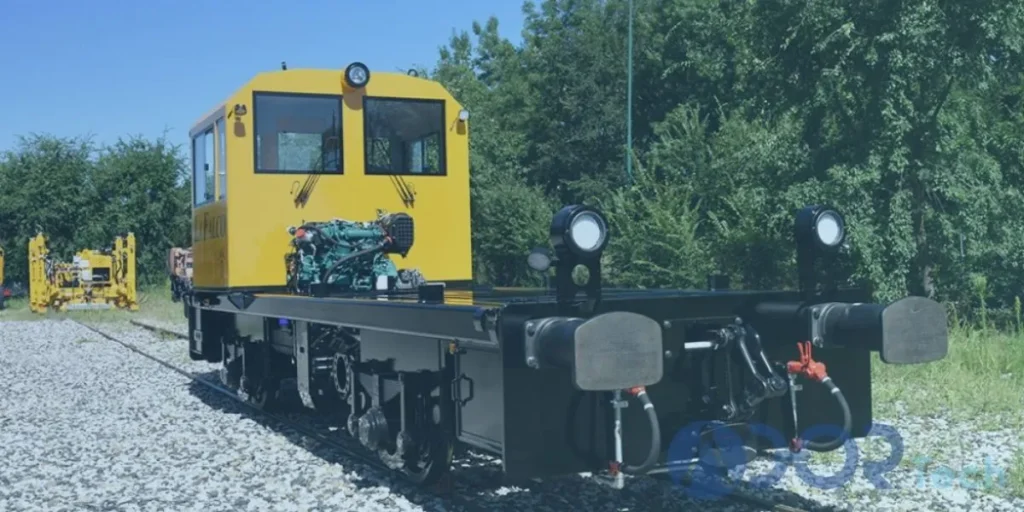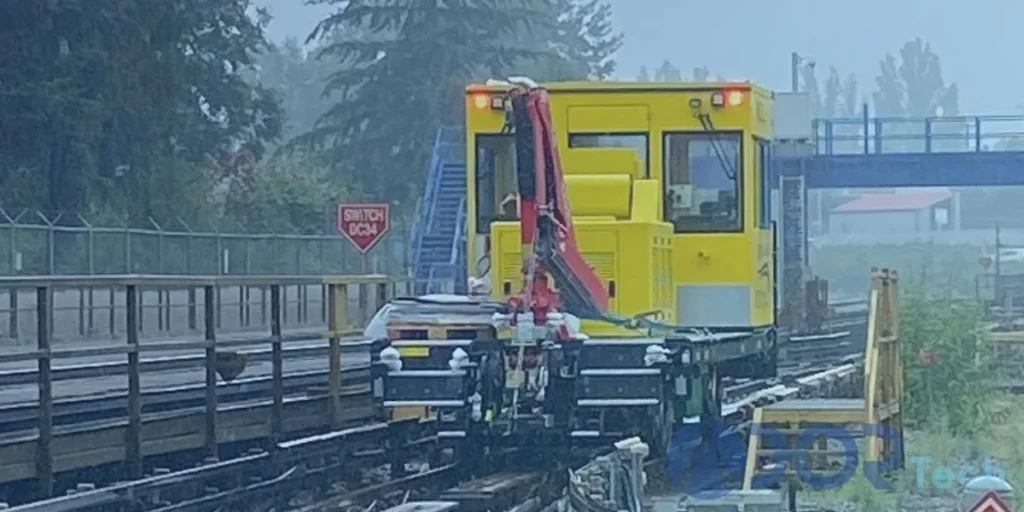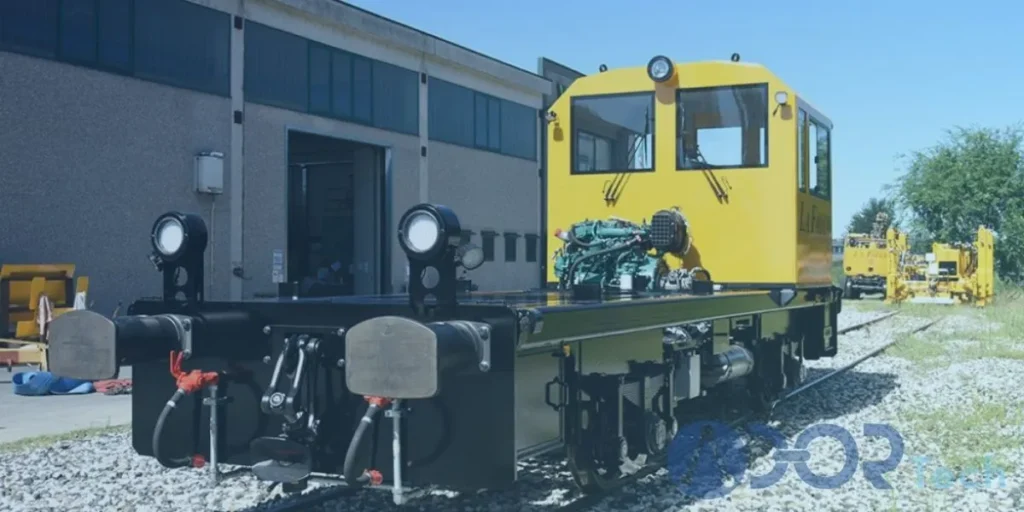Shunting in railway is an essential process that keeps railway networks running efficiently. The shunting process allows individual railcars to be strategically sorted and reassembled into new trains with different cargo and destinations. This complex maneuvering of rolling stock is critical for consolidating freight shipments, distributing rail traffic, and enabling flexibility in railway operations. Without the reshuffling capabilities provided by shunting, railways would lack the agility required to handle changing cargo volumes and mix across different locations and routes. The ability to rearrange cargo groupings is also necessary to optimize load factors, balance weights, and comply with railway regulations. This indispensable operation allows rail systems to meet the needs of diverse shippers and passengers cost-effectively.
We will examine the shunting process, including how incoming trains are received, uncoupled, and sorted wagon-by-wagon onto designated tracks in the yard. Next, we will overview the different types of shunting locomotives and vehicles used to move rail cars in yards. We will compare the features and applications of various shunter types.
We will then discuss the critical functions enabled by railway shunting. Sorting wagons allows freight to be consolidated and directed to different destinations. Shunting also permits the assembly of wagon groups based on cargo type, weight distribution, and destination. Additionally, we will explain how shunting facilitates maintenance activities during wagon downtime. The article will comprehensively explain why shunting is a mission-critical railway process.
For efficient railcar movement during shunting operations, see how a “crew car speeder” can support safe and reliable yard performance.

What Is Rail Shunting?

Rail shunting is the intricate process of sorting, organizing, and reconfiguring railcars to ready freight trains for departure. Unlike road freight transport, where a truck needs fuel and documents before leaving, extensive shunting operations are essential for assembling complete freight trains. Shunting begins when customers order empty freight wagons suited for their cargo. These are supplied to loading points where goods are packed into the railcars. Once loaded, shunting facilities collect the freight wagons from various origins and bring them to rail yards for organization and train formation.
In these large shunting yards, individual wagons are strategically switched between tracks to sort and group them based on destination, rail route, cargo type, and weight distribution. The organized wagons are then coupled in a specific order to form complete outbound trains ready for transport. Yards have dedicated arrival and departure tracks to streamline shunting. Besides assembling departure trains, shunting also disassembles incoming trains after arrival. The inbound train is decoupled on arrival tracks, and the cars are switched to appropriate sidings where they are stored until needed. When wagons are requested at their destinations, the shunting process retrieves them from storage and organizes railcar delivery.
Further rail shunting can occur en route between the origin and final destination if cars need to be detached, added, or reorganized at intermediate stops. This allows cargo to be consolidated and connected through the rail network. Shunting may also rearrange train configurations to balance weight distribution or to isolate and remove defective wagons. Shunters who operate track switches and signals facilitate the intricate coordination of individual railcar movements. Modern automation can assist, but trained staff remain crucial for managing complex rail logistics through shunting. With this flexible reorganization of rolling stock, operating an efficient freight railway is feasible.
See also: “6 Different Types of Railcar Movers“
Importance of Rail Shunting for Railway Networks

Rail shunting is a critical process that enables the efficient operation of railway systems. Railways need more flexibility and responsiveness to transport diverse cargo across complex networks without shunting. Shunting provides the fundamental capability to reorganize wagons based on destination, cargo type, weight distribution, and other operational factors. This allows freight from multiple origins to be consolidated for transport in the same train. Similarly, inbound trains can be disassembled through shunting to distribute goods to their final destinations. Shunting also facilitates the optimization of load factors for cost efficiency and proper weight balancing in train assembly.
Additionally, it allows the isolation of defective cars for maintenance. By shuffling rolling stock between locations, shunting enables efficient sharing of facilities like yards, tracks, and maintenance shops. The ongoing sorting and re-configuring of wagons through shunting is integral to achieving fluid, optimized traffic flows across railway infrastructure. Networks would face severe operational constraints and avoidficiencies without this mission-critical activity. Shunting provides the flexibility for rail systems to meet changing transportation needs cost-effectively.
Shunting Process and Operations

The railway shunting process begins when an incoming train arrives at a rail yard. The train is directed to a receiving track where the previous crew is replaced by shunting yard staff. If no single track is long enough, the train may be temporarily parked nearby until sufficient space opens up. The set of railcars entering a receiving track is called a “cut.” Especially when there are fewer receiving tracks than incoming trains, cuts may comprise convoys from multiple trains bundled together. Thoughtful assembly of cuts influences the efficiency of subsequent sorting.
Once on a receiving track, railcars are inspected for defects before being prepared for decoupling. The incoming train’s locomotive and any specialty cars needing separate handling are detached. The shunting staff then determines the hump sequence for cutting the sorted cars to classification tracks. In hump yards, cuts are pushed up an incline known as a “hump.” At the crest, cars are decoupled, allowing them to roll freely downhill by gravity toward their assigned classification track. Switches route the cars while speed control devices like retarders or track collisions gradually slow them until they couple with other cars on the track.
The process of assigning cars to classification tracks is a core sorting function. If the desired outbound sequence is not achieved after the first pass, cuts can be sent over the hump again. Some yards have return tracks from classification to receiving tracks to re-hump subsets of cars. Cars can also be pulled from any track back to the hump by shunting engines if required. This hump-sort-thump cycle is repeated until the cars are correctly sequenced.
From classification tracks, switch engines pull assembled cars to departure tracks, forming them into complete outbound trains. Scheduling and movement of shunters is an essential logistical task. Final inspections occur before the road crew replaces yard staff and the finished train departs.
While sorting and rearranging cars is the primary shunting activity, other key tasks impact efficiency. How cuts are assembled influences humping success. Proper assignment of inbound trains to receiving tracks avoids congestion. Hump sequencing and speed controls affect sorting throughput. The scheduling and coordination of shunting engines also determine operational fluidity. While not the sole bottleneck, optimizing the complex sorting process is a central focus for efficient shunting operations.
Key Functions Enabled by Shunting in Railway

One of the most vital roles of rail shunting is enabling freight consolidation from multiple origins onto ordinary trains. The shunting process allows wagons loaded at different shipping points to be collected and strategically grouped at yards based on destination, route, and cargo type. Gathering disparate wagons into optimized trains allows efficient freight distribution across complex rail networks.
Rail Shunting also facilitates the disassembly of inbound cargo trains. Mixed freight trains arriving at yards can be decoupled and sorted wagon-by-wagon, with cars switched to appropriate tracks. This enables freight in a common train to be distributed to different destinations upon arrival.
The ongoing reorganization of rolling stock provided by shunting permits optimization based on weight distribution, load factors, and stability. Shunters can sequence wagons to balance weight throughout the train length and group cars with compatible loads. This maximizes operational efficiency, safety, and equipment utilization.
Shunting in railway additionally enables isolation, inspection, and maintenance of defective wagons. Switching operations can remove Cars with mechanical issues from service and redirect them to repair tracks. This allows maintenance workflows without impacting other rolling stock.
The flexibility of shunting also permits changes to train configurations en route if needed. Cars can be detached, added, or reorganized at intermediate stops to adjust cargo groupings, weight balance, or defective car removal.
By facilitating the customizable assembly of rolling stock into trains, shunting provides vital agility to railway operations. It allows freight transportation to remain responsive and efficient despite complex logistics and changing requirements across the rail network. The strategic sorting capabilities enabled by shunting are indispensable for viable freight railways. Essential Functions Enabled by Shunting in Railway
Shunter Vehicle Types: ADOR’s Product Overview

ADOR offers a versatile range of shunter vehicles for yard and depot applications. The OM 181 track vehicle is a key product, available in multiple configurations to suit different operational needs.
The OM 181 provides a robust tubular frame designed for train incorporation with a large modular rear deck. The spacious cabin accommodates up to 5 crew and has excellent visibility supported by front access terracing. Despite its size, the OM 181 width under 2.5m allows regular road transport without oversize restrictions.
The hydrostatic transmission with DTC (Dynamic Torque Control) enables smooth acceleration. Master-slave modes allow remote control of multiple shunters from one cab. The OM 181 also has an independent double drive system that can engage the inner and outer axles separately or together.
ADOR offers the OM 181 in power ratings from 129 to 470 hp using fuel-efficient Tier 4 emissions-compliant diesel engines. The top speed is 60 km/h, with weights ranging from 18 to 36 tonnes depending on frame length. Multiple configurations suit needs like hump yard sorting, depot transfers, work train formation, towing, and maintenance activities.
ADOR can provide customers with tailored rail shunting solutions designed for their specific operations. With engineering expertise and La Falco’s diverse product range, ADOR can deliver optimized vehicles, training, parts, and ongoing maintenance. Contact ADOR to discuss requirements to improve productivity and safety.
Conclusion
Rail shunting is a multifaceted process critical for enabling efficient freight transportation and operations on railway networks. As discussed throughout this article, the ongoing sorting, switching, and re-configuring of railcars provides vital capabilities that would otherwise be impossible.
The rail shunting procedures allow disparate wagons from diverse origins to be intelligently consolidated at yards into optimized trains bound for common destinations. This traffic aggregation enables economical long-haul freight distribution across the rail system. In the reverse direction, incoming trains can be broken down via rail shunting to distribute goods to their final delivery points.
Additionally, shunting facilities provide a mechanism for continuously monitoring and managing rolling stock. Defective cars can be isolated, repaired and returned to service. The condition and maintenance needs of wagons can be addressed during shunting downtime. Shunting also allows dynamic adaptation of train configurations to balance loads and address operational changes.
Railway shunting (called “switching” in North America) involves regrouping railcars into complete trains or disassembling them.
The main methods include hump shunting (gravity-based), loco shunting (using locomotives), and hand or manual shunting, each chosen based on yard layout and operational needs.
Safety is maintained through certified training, adherence to codes of practice, and clear communication protocols, especially in complex yards.




